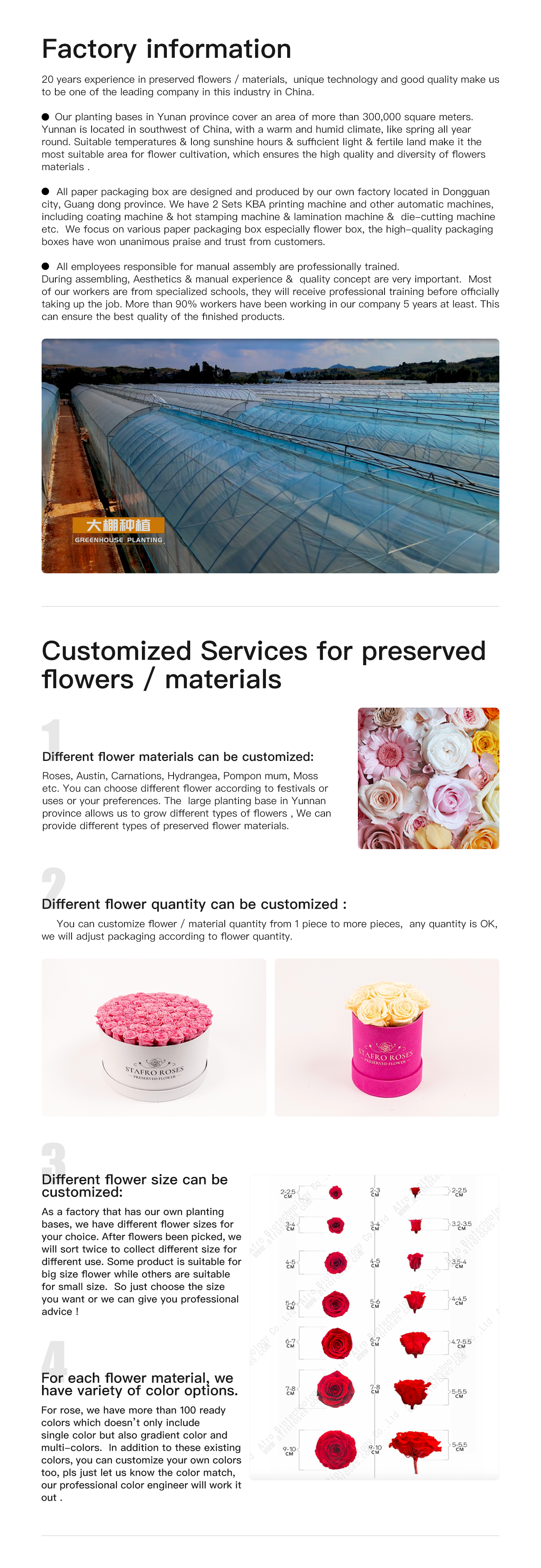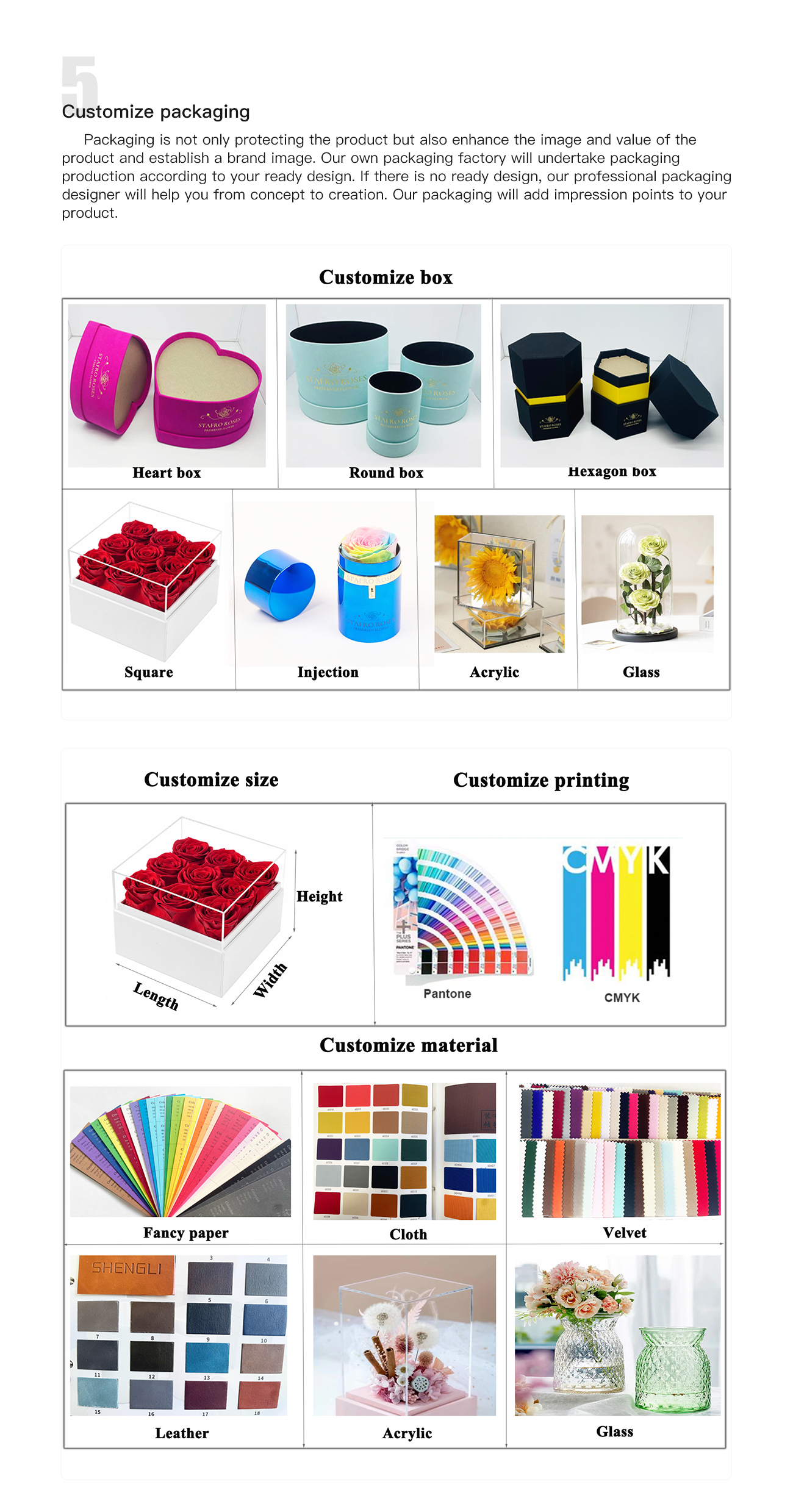
Products


What are long life flowers?
Long life flowers are real flowers that have been grown from the ground and cut from the flower plant and then treated with a glycerin preservative to keep them looking fresh and beautiful for months to years. Long life flowers go by many names on the internet and they also are sometimes called everlastingflowers, eternalflowers, eternityflowers, infinityflowers, immortalflowers,flowers that last forever, and preservedflowers. Often times long life flowers are confused with driedflowers, waxflowers, and artificialflowers, but they are not the same; moreover, long life flowers are preserved with a glycerin solution and undergo a multi-step chemical treatment to create the long lasting effect.
How long can a long life flower last?
Unlike fresh flowers, which typically only last a week or two, long life flowers can last for years without wilting or losing their color. Typically long life flowers will lose their vibrant color and fade over time if they are exposed to fluorescent light or a lot of sunlight. Also, very humid or dry conditions are not good for long life flowers, as too much moisture can cause the long life rose to weep out the glycerin in its petals. If the rose is placed in a place with very low humidity for a long period of time (weeks/months), it’s likely that the petals will become brittle faster and will be more susceptible to cracking or falling apart, much like you see with regular dried flowers.
How do long life flowers last for years?
During the preservation process of the rose, the water inside the rose is replaced with glycerin which is a natural preservative that can help the rose last for several years. According to Robert Koch Industries reference guide on preserving and coloring foliage with glycerin and dyes, ”After a plant is harvested, its water content diminishes rapidly as it is lost to the atmosphere through evaporation. As a result, the plant becomes brittle and often undergoes great physical distortion. By replacing the water content of a vascular plant with a non-volatile liquid such as glycerin, the liquid content in the plant’s cells remains high long after treatment, helping provide suppleness and value to the product. Because of its high boiling point, glycerin does not evaporate readily at ambient temperatures, helping to keep the liquid content from diminishing.”















